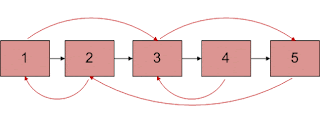Binary Tree Paths @LeetCode
PROBLEM : Given a binary tree, return all root-to-leaf paths. For example, given the following binary tree: 1 / \ 2 3 \ 5 All root-to-leaf paths are: ["1->2->5", "1->3"] -------------------------------------------------------------------------------- SIMPLE c++ IMPLEMENTATION : -------------------------------------------------------------------------------- /** * Definition for a binary tree node. * struct TreeNode { * int val; * TreeNode *left; * TreeNode *right; * TreeNode(int x) : val(x), left(NULL), right(NULL) {} * }; */ class Solution { public: vector<string> binaryTreePaths(TreeNode* root) { vector<string> vec ; if(root==NULL) return vec ; string str="" ; CheckAllPaths(root,str,vec) ; return vec ; } void CheckAllPaths(TreeNode *root,string str,vector<string> &
